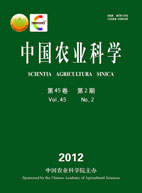-
Resistance of Different Tea Cultivars to Empoasca vitis Göthe
- JIN Shan, SUN Xiao-Ling, CHEN Zong-Mao, XIAO Bin
-
Scientia Agricultura Sinica. 2012, 45(2):
255-265.
doi:10.3864/j.issn.0578-1752.2012.02.007
-
 Abstract
(
1351 )
Abstract
(
1351 )
 PDF (672KB)
(
1390
)
PDF (672KB)
(
1390
)
 Save
Save
-
References |
Related Articles |
Metrics
【Objective】 The objective of this study is to analyze resistant levels of 9 tea cultivars to small green leafhopper (SGL) Empoasca vitis and to establish foundation for mechanism research in the resistance of various tea cultivars. 【Method】 The population dynamics in tea garden, life cycle, number of laid nymphae per female and nymph survival rate of SGL on different tea cultivars were investigated. Moreover, the feeding behavior of SGL on tea cultivars were obtained by using electrical penetration graph (EPG) technique. 【Result】 (1) The population density on Enbiao (EB), Zhushanyihao (ZS), Banzhuyuan (BZY) and Lantian (LT) cultivars were more than Deqing (DQ), Jiande (JD), Changxingzisun (CX) and Juyan (JY). (2) The life cycle duration on DQ, JY, CX, JD and Longjing 43 (LJ) were significantly longer than that on EB, BZY and ZS. (3) The number of laid nymphae per female on EB and BZY were significantly more than that on JY, CX, JD and LJ. (4) The difference existed in nymph survival rate on various cultivars. The survival rate of nymphae on EB and ZS were the highest, amounted 55.00% and 50.00% respectively, while the lowest was on JY, amount 32.00%. (5) The total feeding duration on ZS and EB were significantly longer than that on DQ, JY, CX, JD and LJ. (6) The resistant levels of the 9 tea cultivars to SGL were classified into two groups based on the result of cluster analysis according to the life cycle duration, number of laid nymphae per female, nymph survival rate and the feeding duration. The first group, including JY, DQ, LJ, JD and CX, was resistant to the SGL, and the second group was susceptible to the SGL, consisting of LT, BZY, ZS and EB. Generally, the order of resistance level with 9 cultivars from strong to weak were JY > DQ, LJ, JD and CX > LT, BZY and ZS > EB. 【Conclusion】 The natural choice, adaptability and feeding preference of SGL on various cultivars are reflected well based on the dynamics of population density, life cycle, number of laid nymphae per female, nymph survival rate and feeding duration, which are significantly different in the classification of various cultivars in resistant levels to the SGL.









